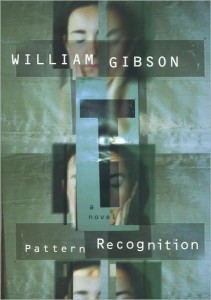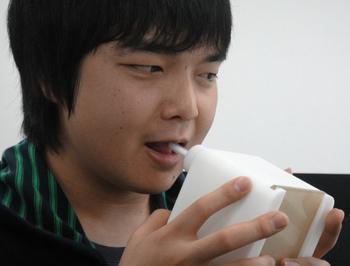“The future is there,” Cayce hears herself say, “looking back at us. Trying to make sense of the fiction we will have become. And from where they are, the past behind us will look nothing at all like the past we imagine behind us now.”
–William Gibson, Pattern Recognition“This is a kind of writing which simply makes you feel very strange; the way that living in the late twentieth century makes you feel, if you are a person of a certain sensibility.”
–Bruce Sterling, “Slipstream”, SF Eye #5, July 1989
I first read William Gibson’s Pattern Recognition almost a year ago, after a long hiatus from his work. I’ve long loved his books, but went through the kind of distance that time and life just sometimes put between a reader and an author. Pattern Recognition was the return, and I went into it cold, knowing nothing about it except for the author–an  experience that I always find somewhat refreshingly like exploring a dark, richly appointed room with a small flashlight.
experience that I always find somewhat refreshingly like exploring a dark, richly appointed room with a small flashlight.
And then something rather interesting happened. The book contains a description of the memories that the protagonist retains of the events of September 11, 2001, and as I read, I experienced a curious kind of vertigo–something that I have since come to understand as the mirror-hallway perception of reading a fictionalized account of a real event in my own memory, remembered as past in a near-future context. In that moment, what I experienced as vertigo was the collapsing of a number of categories–past, present, and future, fiction and non-fiction, myself and other.
Vertigo, a really common illness seen in many of us may be a sort of dizziness that makes balance disorder. Vertigo gives one a sense of swaying while the body is stationary with reference to the world or its surroundings. Vertigo is commonest when an individual goes up some height. it’s going to produce to a false sensation of movement. Vertigo often results in nausea and vomiting.
Vertigo is said to the internal ear balance mechanism that relates to the brain or the nerves connecting the ear and therefore the brain. The disease creates a loss in equilibrium and wooziness. However, vertigo and dizziness aren’t synonymous. While dizziness is one symptom of Vertigo, not all dizziness are often termed as Vertigo. Vertigo is commonest in elderly people, but can affect both sexes at any age.
Vertigo is a treatable disease and handled through medicines, but only if treated from well qualified doctors like vertigo la. As vertigo is more a symbol of other diseases, it are often treated by treating the particular disease that causes this. If Vertigo has been caused by a tympanic cavity infection, then it requires antibiotic treatment. Home remedy is additionally an option for vertigo.








